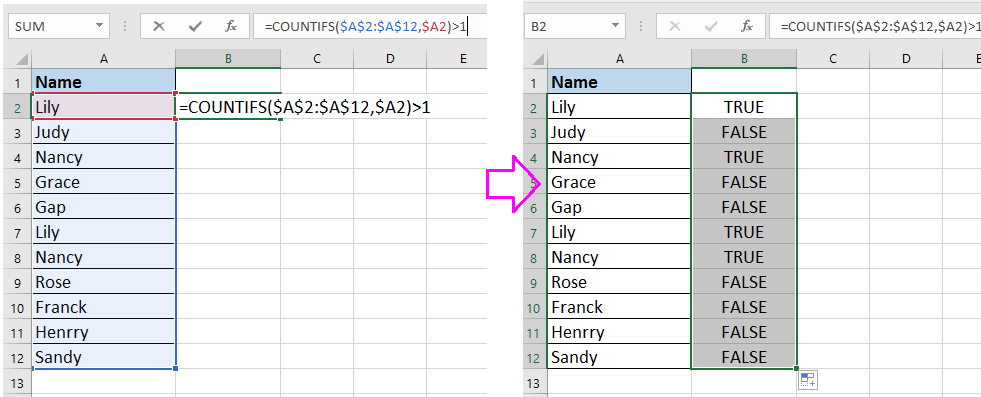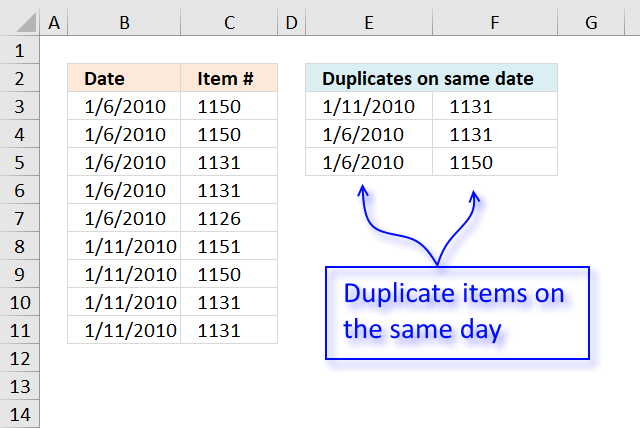
After that, use a simple filter to filter out those with count = 1.Īnother easy way you can do it is, instead of merging your two files together, simply use VLOOKUP to identify whether each of your record in one file exists in another. If you're comfortable with formulas, then you can simply add a new column and in that column, use COUNTIF to find out the number of times the voter_id exists in your table. Then you can use a simple filter to only show records with more than one occurrences. You can select all cells in your pivot table, copy and paste by values back to your original table. The COUNTIFS function, available in all versions of Excel since 2007, allows us to check for a match of more than one value across all the rows in our.
How to show only duplicates in excel 2010 how to#
Now in your pivot table, drag and drop all your columns to "Row Labels". Note: This tutorial on how to find duplicates in Excel is suitable for Excel 2007, Excel 2010, Excel 2013, Excel.If you can't see the field list, right click on your pivot table and select "Show Field List".Every other post or explainer about this has been about how to REMOVE duplicates, which is not my issue. Next, select the color in which you want the duplicate values to be highlighted in and hit OK. Hi folks, I found only one other post out there that asked this question, and it was for Excel 2003 and said this was only possible if the person upgraded to 2010. When done, click Conditional Formatting under Home tab, select Highlight Cells Rules and finally select Duplicate Values. Select your table (including the headings) You can select multiple columns and rows by holding down Ctrl key and then clicking them.If you're not familiar with formulas in Excel, the easiest solution I believe for you right now is to use a pivot table: It's essentially the same results, but in two completely different methods. I apologize for making a separate question for this, but I've found a way to ask the same thing a different way, in a manner that would make much more sense for myself. Then remove the filter/formula, and be left with something like: I'm hoping by just showing these entries only, I'll be able to highlight them all, and delete.

The name of the column I'll be checking/comparing is "voter_id", which is the number field you see in the examples. Now how where can I go from the point I am at now?Įxample of what I want to show: My hopes was that I could come up with some formula show only the duplicate values, that way I could just delete them from there. So I've exported both files to a tab delimited text file, and then merged the two text files so that now I many duplicate entries.


I need to remove any entry that Old contains from New.


 0 kommentar(er)
0 kommentar(er)
